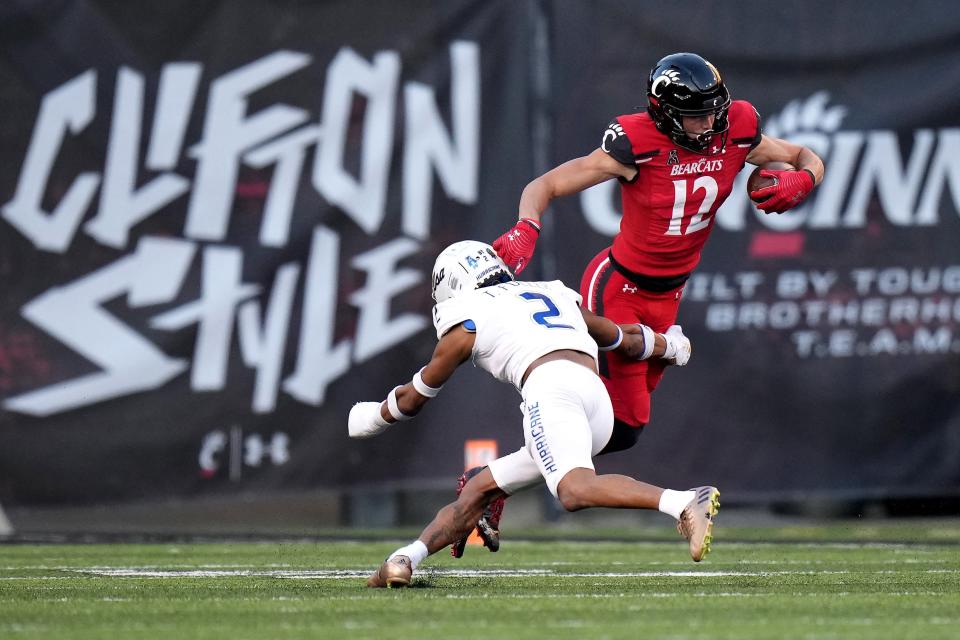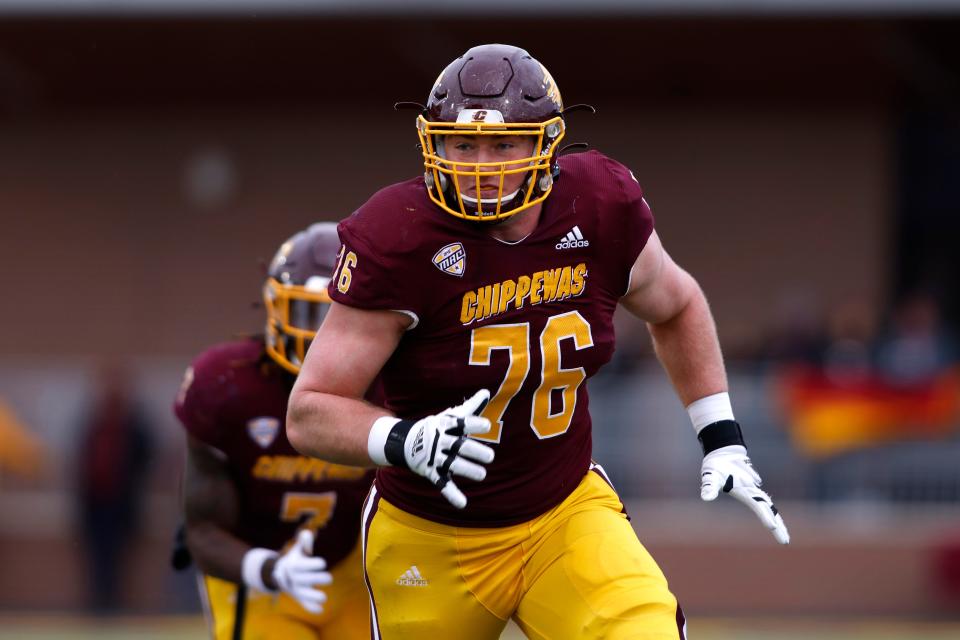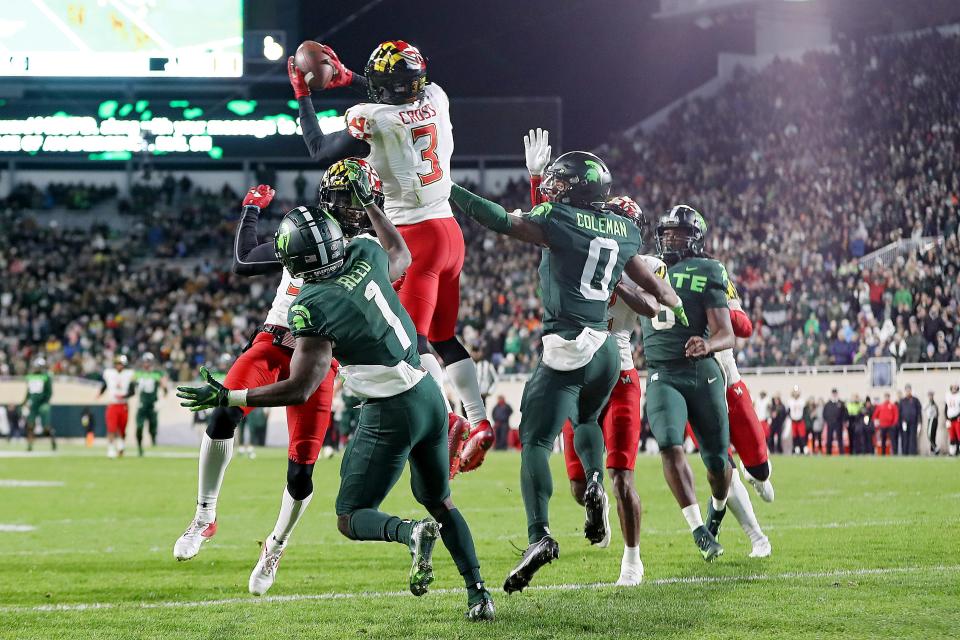10 thoughts on the Colts' 2022 draft class and the plan to contend
INDIANAPOLIS -- The Colts came into the 2022 NFL Draft down a first-round pick and came out of it with eight players. They moved up and down at times. They made plenty of moves that felt like trademark Chris Ballard, but they made one in particular that wasn't.
Now that the dust has freshly settled, here are 10 thoughts on the eight selections and what they say about what this Colts team is trying to be:
The Colts draft plan
1. The Colts came into this draft with a pretty clear plan, if you were putting more value on their actions than their words. They had acquired one big domino on offense in Matt Ryan and two on defense in Stephon Gilmore and Yannick Ngakoue. They had made depth signings on defense, such as safety Rodney McLeod, while not signing a single outside free agent on offense. That's because too many free agents on offense wanted to see who would be throwing the ball first, and after that market dried up, the Colts decided to go after young pieces to support their soon-to-be 37-year-old quarterback.
2. Start with the first pick. It was the worst-kept secret on Earth that the Colts would be drafting a wide receiver, given that the No. 2 was Parris Campbell, he of 15 career games played. This draft was loaded with them. After North Dakota State's Christian Watson went No. 34 to the Packers as the seventh receiver off the board, the Colts were left with the "best" value option at No. 42 being Skyy Moore out of Western Michigan, according to most projections. But at receiver, the Colts' are not conventional. Ballard has always coveted size, only really once dipping below 6-foot-3 on an early pick with Campbell. And with a 6-4 Michael Pittman Jr. as the 'X' receiver, and plans for a committee in the slot, the specific need for a 'Z' receiver with downfield speed moved the Colts away from the board's consensus, which was a more slot-driven, intermediate player in Moore.

Why the Colts traded back in the second round of the NFL Draft
3. By trading back to No. 53 and picking up an extra third-rounder, the Colts were more comfortable taking a receiver who had third-round value on many boards in Alec Pierce. That's not to say he can't be a good player, just that he's less versatile and polished than other options. The Colts were obsessed with the fit, wanting that 'Z' receiver to be a burner to stretch defenses vertically and to pull single-high safeties to one side of the field. Pierce has 4.41 speed and an explosive first step, so he can do this well, but where he's best is going up for the ball along the sidelines. He's a 6-3 hands catcher with the best vertical jump of any of this year's receivers at 40.5 inches, and he brings the physicality of a former linebacker. That gives Matt Ryan a progression to throw even when routes are covered and Jonathan Taylor a blocker at the parts of the field that create explosive runs. Pierce is not built for every situation, but he's built for the ones the Colts are concerned with: gotta-have-it downs when defenses have keyed on Pittman Jr. and Taylor.
RELATED: Why the Colts loved their picks: Scouts break down Colts draft class
Gregg Doyel: Chris Ballard, mindfreak, is at it again in the 2022 NFL Draft
Insider: Peyton Manning remains invaluable resource for Colts as sounding board for Jim Irsay
4. Where Pierce is lacking right now is in the short areas of the field. He wins on speed, not on cuts and change of direction, which he hasn't worked on too much. So a void remained, and the Colts were sweating nervously for Jelani Woods to fall to No. 73, Ballard said, because of the two-way upside he possesses. At 6-foot-7, Woods posted the best relative athletic score for any tight end in the draft since 1987. That mattered after the Colts pored over Ryan's film from last season and saw the 1,026 yards he produced with a rookie tight end in Kyle Pitts. Pitts is a generational talent that didn't exist in this draft, but he made the Colts want to chase the most athletic tight end they could find. Woods is adjusting to a trimmed-down weight, but his blocking skills will get him on the field in 12 personnel with Mo Alie-Cox, and then the athletic traits can shine on play-action. Woods is basically Alie-Cox 2.0, except he's five years younger.
5. The trade down in the second round was the move that set the stage for everything. By moving down 11 spots and sending a fourth-rounder, the Colts got the chance to pick again just four spots after they took Woods. They knew the board well at that point and knew that Bernhard Raimann was falling past his second-round projections. The Austrian's background made valuation difficult, as he's played tackle for just two years and American football for five but his tape at Central Michigan was shockingly clean, the profile athletic and nasty. The sample size was small. The Colts felt their third pick on Day 2 was worth that gamble. Raimann's big drawback physically is that his arms measure just 32 7/8 inches. That measurement often bumps players inside to guard, where the traits can shine. A good guard is not worth the No. 42 pick, but it can be worth The No. 77 pick, or a team's third pick.

How important is an offensive lineman's arm length?
6. The arm length was the piece the Colts wrestled with. Ballard typically has benchmarks in that area. But his process has also evolved a bit over the years. Back in 2018, when the Colts drafted Braden Smith at No. 37 overall, they were convinced he was a guard based on his dimensions of 6-6, 315 pounds and 32 1/4-inch arms. Seeing him up close every day changed their minds, and he's now a lockdown starting right tackle making $17.5 million a year. That success story let the Colts focus more this year on Raimann, who is 6-6, 303 pounds with 32 7/8-inch arms. They loved how much of a student of the game he was, and the idea of placing him next to an All-Pro in Quenton Nelson set them at ease. Said Colts director of pro personnel Kevin Rogers, "He's got great lean body mass, about 250 pounds of lean mass. He’s got the feet to center you up on the edge. There’s plenty for him physically to survive on the left side."
Insider: Three big needs, three fits: Chris Ballard, Colts find perfect marriage of value and need
7. The Colts had three glaring weaknesses entering this draft in wide receiver, tight end and tackle. By the third round, they'd addressed all three. Now, it was time to chase something that felt like luxury. The Colts had a player on their board they knew they had to pass on to fill those needs. But 19 picks after Raimann's selection, Nick Cross was still there. Indianapolis wasn't slated to pick again until the fifth round. Someone in the war room asked Ballard where he'd take Cross if he were coming out next year, and he said in the second round. The question then became, "Why wait?" A 37-year-old quarterback warps the construct of time. And that's why Ballard did what he normally doesn't and sent a future third-round pick to the Broncos, plus one of this year's fifth-rounders, to move up for Cross at No. 96.

8. The Colts signed two safeties this offseason in Rodney McLeod and Armani Watts. They have two starters back in Julian Blackmon and Khari Willis. It's a luxury position for the draft, but it'll become crucial in Gus Bradley's defense. He splits his safeties, with one up high guarding the middle third of the field and the other in the box. They're supposed to be big-time playmakers. At 6-foot and 212 pounds, Cross showed flashes at Maryland, but he was often the single-high safety tasked with cleaning up the misses of a terrible defense. So far from the ball, his full complement of skills never came out, like the 4.34-second 40, best of any safety at the combine; and the 37-inch vertical and 130-inch broad jump, both top-10 marks. Indianapolis feels it has the opposite setting, with five Pro Bowl defenders and a path forward in the box with Willis entering the final year of his deal. Cross will start on special teams, but he profiles as another chaos agent to Darius Leonard in the middle of the defense if he can deliver.
9. The cost of moving up meant the Colts didn't pick again until No. 159. Some hits on the players they rounded out with:
Fifth-round Missouri State defensive tackle Eric Johnson was a classic small-school player that Ballard always seems to want. Johnson was not a special college player, but he flashed at the Senior Bowl, and that flashing lightbulb caught the Colts' eye. He has plenty to learn and plenty to add in mass, but he's an experiment nose tackle.
Sixth-round Youngstown State tight end Drew Ogletree is one of Ballard's favorite picks. He's 6-5 and 261 pounds, but he's built like an ox in the lower and upper body. It's the payoff of lifting in college since 2016. He's still new to the position, but after the Woods pick, he's in a better spot to work that slow grind. Like with Woods, the size and straight-line speed profile is immaculate.
Sixth-round Cincinnati defensive tackle Curtis Brooks is a good player already, having racked up 20 combined sacks and tackles for loss for a Cincinnati team that reached the final four. The issue for NFL teams was that he is 287 pounds, and at 6-2, he's not equipped to keep much more weight on. But the Colts want their linemen chasing after the quarterback on every snap, which is what Brooks is built to do with his strength and long speed. He'll be the backup 3-technique to DeForest Buckner, with a chance to rush next to him at times.
Seventh-round Yale defensive back Rodney Thomas II is a dart throw on exceptional measurables in the Ivy League. That worked out pretty well for Ali Marpet with the Buccaneers. Thomas switched from linebacker to strong safety and now has a chance to be a cornerback. The Colts don't know what he is, but with a vertical jump and 20-yard split in the 98th percentile or better, they wanted to experiment anyway.
10. The Colts didn't get everything on the wish list, of course. Their needs for interior offensive line and cornerback depth went unaddressed, and they need a veteran receiver. But the process is important, and traits defined so much of this draft. Again and again, the Colts took players with relative athletic scores of at least 9 out of 10 and guys who were 23 years or older, often with strong academic backgrounds. The combination of maturity, intelligence and athletic traits catch their eye most. They bet on their coaches to quickly develop players and on themselves to keep the core together. This is how they want to build a contender quickly for Ryan for however much time he has to lead them.
Contact Colts insider Nate Atkins at natkins@indystar.com. Follow him on Twitter @NateAtkins_.
This article originally appeared on Indianapolis Star: Indianapolis Colts: 10 thoughts on 2022 NFL Draft and plan to contend

